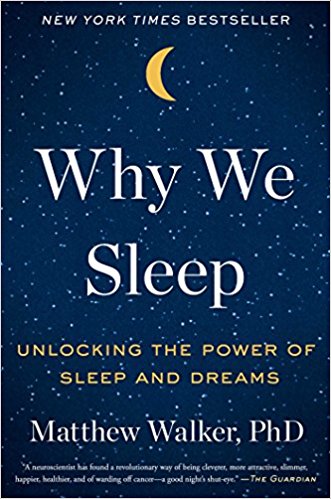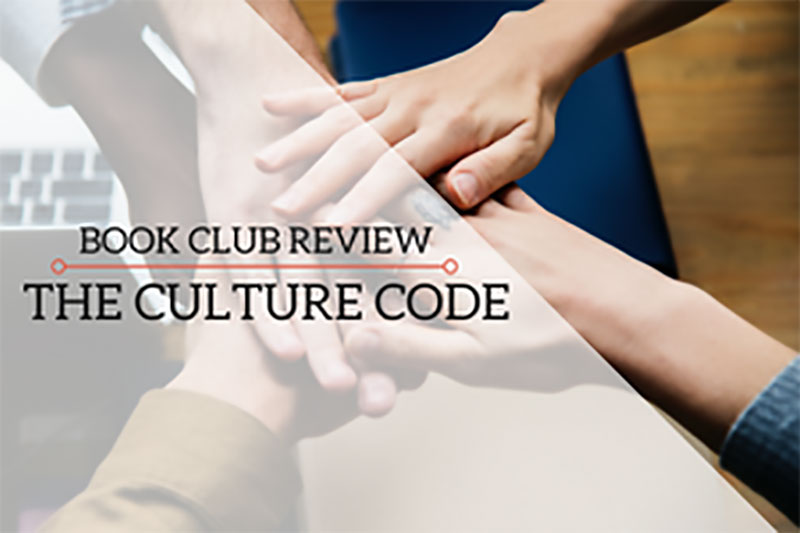What is culture, and why is it so important in organizations? Businesses often focus on promoting good culture and encouraging teamwork. However, how does one build and contribute to a positive company culture? We don’t talk too much about what culture means to individuals and to companies. Until now.
For the past six weeks, the Dimensional Insight Book Club has been reading The Culture Code: The Secrets of Highly Successful Groups by Daniel Coyle, whether on the beach enjoying the sun or with a cold beer to cool off. What have our readers learned about company culture?
Meet our panel
Our book club panel for The Culture Code consists of Tim Lindeman, vice president of operations in our Burlington, Massachusetts office; Jamie Clark, technical director in our Cambridge, Massachusetts office; Suzie Massey, customer support manager in our Green Bay, Wisconsin office; Lieven Schellevis, partner manager EMEA (Europe/Middle East/Africa) in our Leiden, Netherlands office; and Kathy Sucich, senior content and communications manager in our Burlington office.
Q: What does culture mean to you? How important have you found it to be in the organizations where you’ve worked?
Lieven: When I joined Dimensional Insight a couple of years ago, I had never expected to join a software company. It was really the culture of Dimensional Insight Netherlands (called COPE at the time) that persuaded me to come on board (along with the fact that I loved working with Diver Platform). I have never regretted that. Dimensional Insight has a great culture. If you compare us to the competition, it’s clear that we perform beyond the sum of our parts and it’s very exciting to be a part of that.
Kathy: Culture to me is the “secret sauce” of a company. You have all these people in an organization with skills. And hopefully you have the right skills in the right positions. But culture is the yeast that causes those skills to grow and work well together and become something that’s better than the individual ingredients. (I love bread, and bread is definitely better than flour, water, sugar, and salt individually, so I thought this was an apt analogy!) I believe culture is critical in an organization. I have left jobs because of a negative culture, and I have stayed at others (this one!) because of a positive culture.
Tim: Culture is the soul of an organization. Culture is shaped by people and their shared experiences. I think it is perhaps the most important and powerful characteristic of a company. It is the glue that holds a company together.
Jamie: In the context of how people work together in organizations, I think culture is not very well-defined. It seems to cover a lot of aspects of cooperative behavior, motivation, and philosophy. Here are two concepts that I think are a part of culture, but not necessarily a complete picture. One: the ease with which people work together, enabled by social bonds that are reinforced by the organization. And two: how people, acting independently, can nevertheless be counted on to contribute towards goals that others share. It seems to me that culture has been important in all the organizations I’ve worked in, though usually in an implicit way. I’m not sure what it would mean for culture to be unimportant to an organization.
Suzie: Culture is like the personality of the company or organization. It is very important to have a strong company culture. At Dimensional Insight, it is truly a strong family type of culture. The owners believe if they take care of the customer and employees, the employees and customers will take care of Dimensional Insight.
Q: As someone who works in a corporate environment, how did The Culture Code change your perspective on company culture and organizational behavior?
Tim: I didn’t realize the importance of safety and shared vulnerability on a culture. I think the book outlines some good high-level traits of cultures at successful companies. However, I don’t think it is easy to define what makes a “successful” culture. In fact, I would expect that there are many differences between the cultures of successful firms, just like there are many differences in the personalities of successful people.
Jamie: One concept the book stressed was over-communication. It suggests that repeating certain messages (appreciation, statements of purpose, signals of belonging and safety) is an important part of culture-building. I used to see that sort of thing as redundant and occasionally forced, almost insincere. The book pointed out how those messages can have a subconscious or automatic effect, and that they have a deeper value even when they might be unnecessary on the surface.
Suzie: I don’t think it changed my perspective on company culture. It reinforced the skills that are need in a positive company culture, such as respect, teamwork, trust, results-oriented.
Lieven: I consider a good and strong organizational culture as something highly ungraspable, which is the result of a large number of different factors such as leadership, company values, and employees’ individual behaviors. Reading The Culture Code has changed that. I learned that a strong and good culture is about three very clear skills: building safety, sharing vulnerability, and establishing purpose. And although I still think that in many cases a strong and positive team culture originates from individuals with these skills, I’m more open to the idea that a strong culture can be built as well. Coyle gives a lot of very practical suggestions, but the key to good culture is sending real clear signals of connection, not once, but over and over again.
Kathy: I don’t think the book changed my perspective on company culture, but it did help me put a framework around certain aspects of organizational behavior. I found it was useful to look at culture through the three skills Coyle discussed (“Build safety”, “Share vulnerability”, “Establish purpose”). I also found that the “ideas for action” in each section really helped bring his point home and helped the reader understand how she/he could improve culture in their groups. I, for one, got a ton of ideas from those chapters!
Q: Based on Coyle’s interactions with various groups and businesses, which anecdote stood out for you the most and why?
Jamie: I found the discussion of the differences between Google and Overture to be very interesting. He says that Google won “because it was safer.” Of course, it was likely to be more complicated than that, but another difference seemed to be that the people at Google worked efficiently and enthusiastically and in a somewhat unstructured way, while Overture was bogged down by layers of bureaucracy, meetings, and strategy. I don’t know whether that’s true (Coyle doesn’t present much evidence for these claims) but I found an intriguing notion there: that energy spent on certain top-down methods of management and organization might be better spent ensuring that people are empowered to solve problems and innovate on their own. This was also reflected in the introduction, in the story of the kindergartners who out-performed the adults at the task of building the tallest spaghetti-and-tape structure simply by putting less effort into planning, and more into doing.
Suzie: The Christmas truce during World War II stood out for me because I don’t remember learning about that in school. For those who may not know, the Christmas truce was a series of widespread ceasefires between British and German soldiers around Christmas 1914. During these ceasefires, soldiers chose not to fight one another, played games of football (soccer), sang Christmas carols, and exchanged gifts. I found it very interesting how they created bonds of safety and trust during the struggle for survival in the war.
Lieven: There are many very interesting anecdotes in Coyle’s book, but there is one that stood out for me. In the epilogue, Coyle describes how he started to apply the knowledge he derived from his own research in coaching a team of young writers at his daughters’ school. I have two young daughters myself, and I sometimes struggle with how to help them in developing their talents, building self-confidence, and so on. That’s why I found it so fascinating to see what young children can achieve if you start with creating the right conditions for learning and personal development. You need to create a safe space where children feel connected to each other and where they share vulnerability. It may look simple, but it requires a lot of reflection and discipline from parents and teachers, who need to act more as guides. This is where the many action items from The Culture Code turn out to be very useful.
Kathy: Coyle talked about how a team of Harvard researched tracked how well 16 surgical teams learned a new heart surgery technique. There was one team that was part of an “elite” institution with a nationally recognized heart surgeon, and another team from a small, rural area with relatively inexperienced team members. While you’d expect the first group to learn the heart procedure more quickly, it was actually the second group that learned it faster. The researchers found that the more successful teams overall had a growth mindset, understood their individual roles and the value of the team, rehearsed the procedure in detail, were told to speak up if they had a problem, and reflected on performance after the procedure. I liked this anecdote, as it really pulled together for me the important characteristics of successful teams.
Tim: The story about Larry Page pinning a note on the cafeteria wall that said “These ads suck” was pretty memorable. Doing so invited anyone who saw the note to take initiative to come up with their own solution to the problem. If you give people an opportunity to take on big challenges, sometimes they will respond with solutions you never thought were possible.
Q: Whether you’re in a leadership position or not, how can companies work to promote a positive culture and environment?
Suzie: Companies can work to promote a positive culture by building trusting relationships, encouraging teamwork, and promoting a culture of “work smarter not harder” along with having some fun at the same time.
Lieven: In many corporate teams, collaboration is dominated by what psychologists call “status management.” This isn’t the most efficient way of interacting because team members are more occupied by figuring out where they stand within a team instead of focusing primarily on the problems. Therefore, it’s key for organizations to build safety. Companies can do this by making sure that everyone has a voice during company meetings and stand-ups. Another important insight is creating a sense of belonging, and I would advise companies to take this on, especially during the onboarding of new employees. Finally, I’d advise companies to create interaction-rich work spaces because it turns out that proximity matters massively to the frequency of interactions between colleagues; it’s important that everyone is talking to everyone.
Kathy: A lot of businesses these days seem to have the idea that having a positive culture involves free lunches, game rooms, and standing desks. These are certainly nice things to have, but I don’t think that’s what culture is about. To me, promoting a positive culture starts with respecting each employee and his or her contribution to the company, and trusting people in their roles. It also involves having individuals with a growth mindset and a bit of humility. Team members need to be willing to learn new things and admit when they don’t know everything or could have done better. Companies need to encourage this humility – Coyle talks about having a “blame-free environment” in which people (especially leaders) can say, “I screwed that up,” and everyone can move on.
Tim: A clear common sense of purpose does well to unite a team. An organization’s leaders should continually remind the team of this purpose and illustrate how the contributions of individuals are making a difference. Every individual’s ideas are important. By allowing every member of the team to share their ideas and contribute to the decision making, they will feel a deeper connection to the company and have a greater sense of achievement.
Jamie: The book had several suggestions in this vein, but I would call out in particular the idea that we should be clear about our priorities and reinforce them frequently. A single person can have an impact on their team and the people with whom they communicate regularly, and as a company grows I suspect it becomes easy for its culture to become fragmented. Laying a foundation of priorities, guidelines, and philosophy seems like a good way to keep the overall culture synchronized. Perhaps more effective than requiring certain “culture building” activities in a centralized fashion, clear priorities could allow separate groups to apply their own techniques to foster teamwork and cooperation.
Q: What can you tell us about the culture within your respective Dimensional Insight office?
Kathy: I enjoy coming to work because the people here respect and trust each other, and I think that is the foundation of culture. The marketing team, which I am a part of, works really well together because we really do try and learn from each other, and learn from what works (or doesn’t work) and improve upon it for the next time. There are no big egos here.
Tim: Dimensional Insight has a very strong and unique culture. We are an engineering company and attract straightforward and talented people who want to do good work. Our founders focus on building relationships. We have a very successful culture, which can be seen in our very low employee turnover. Keeping staff for a long time is important, because it takes time to get up to speed with our technology and industry focuses.
Jamie: The Cambridge office has always been flexible, unstructured, and social. People have often been given some freedom to choose their own projects and manage their own time. In fact, it has occasionally been difficult for new team members to become acclimated to that freedom, but once they do, they seem to find it to be a great benefit. For a long time, the office was very small. It has been growing, and I think maintaining the culture while accommodating the growth will be a challenge over the next few years.
Suzie: In the Green Bay office, we have a culture that focuses on teamwork. If someone is having difficulty solving an issue, that person can easily reach out to others for help. Everyone works hard to achieve positive results. We have lunch together twice a week, play Bananagrams daily, and try to get together outside of work when the schedules allow.
Lieven: Dimensional Insight’s office in the Netherlands has a very strong and pleasant culture with a strong sense of safety and belonging. Although we are located on three different floors, there are a lot of occasions to connect with each other. Every day we eat together at one big table, for example. Plus, by having frequent stand ups and peer review sessions, we ensure that honest feedback is given to each other.
Q: What is one idea from the book that you would like to put into action?
Tim: We should do a better job at establishing a clear purpose. This isn’t easy when you get pulled in many directions with the day to day needs of the business.
Jamie: Here are two ideas – after action reports (AARs) and physical reminders of belonging and purpose. AARs seem like a good way to learn from booth the good and the bad. If done properly, they should avoid judgement about individuals and instead focus on setting the conditions for good outcomes from the next project. As for artifacts, I can’t quite put my finger on it, but there’s something very appealing to me about using common space in the office for little reminders and symbols of company culture.
Suzie: We should collaborate more with the other offices at Dimensional Insight.
Lieven: There are many ideas I would like to put into action, but if I had to choose one, it would have to do with sharing vulnerability. According to Coyle, building vulnerability is like training a muscle and in order to do that, you have to be prepared to feel pain. Now that I know how much teams can benefit from sharing vulnerability, I would like to try to embrace discomfort and organize more feedback sessions with team members in order to discover together what works and what doesn’t work.
Kathy: Coyle talked about after-action reviews (AARs), which is something that Navy SEALs do after every mission. It’s about assessing your intended results, whether you met them, why you obtained the results you did, and what you will do the same or differently for next time. It’s all about learning from your successes and mistakes, and refining so you do a better job next time. It’s also about figuring out what works and what doesn’t in a blame-free environment. This is something I have started to implement for marketing projects – and would like to do so even more – to ensure we always have an eye towards improvement.
Q: If you could recommend someone to read this book, who would it be and why?
Jamie: In general, I think the book was light on objective prescriptions. It’s probably hard to have specific recommendations when the potential audience covers a very wide variety of organizations. However, I did find much of the book to be inspiring. When reading the stories in the book I didn’t usually come away with a specific plan for change, but I did frequently get a feeling, vague but still powerful, that culture is not an accident – that to some degree I can manipulate it, or at least affect it. As for recommending the book, I don’t have a particular person in mind, but I would say it’s useful for anyone in a leadership role, as a reminder that an effective team isn’t chosen; it’s cultivated.
Suzie: Rachel Donais. I think she would find it interesting as I believe the San Diego office culture is similar to our Green Bay culture.
Lieven: I would recommend it to Eric Fleurbaay of BusinessWise. I know Eric because he uses Dimensional Insight’s technology to measure and analyze employee engagement. Eric is an expert on human and group behavior in organizations. He is very passionate about the connection between the culture and the success of an organization. That’s why I think he will appreciate this book, although I wouldn’t be surprised if he has already read it!
Kathy: I would like everyone on the marketing team to read it. These are the people I work with day in and day out, and while I think we already have a strong culture and strong output, there is always room for improvement.
Tim: I think this book is a good read for managers and employees alike. Finding a company with a good culture makes a big difference in any individual’s work life. No matter where you work, there will be good days and there will be bad days. If you work for a company with a good culture, the bad days aren’t quite as bad.
Thanks, everyone! Did you read The Culture Code or do you have thoughts on organizational culture? Let us know in the comments section below.
Next Book Club pick: Why We Sleep
For our next selection, we pivot from organizational culture and group dynamics to sleep and dreams. Stay tuned for our upcoming post on Why We Sleep: Unlocking the Power of Sleep and Dreams. Matthew Walker, a neuroscientist and sleep expert, tries to answer the difficult questions that scientists haven’t been able to answer: why we sleep or why we can suffer health consequences if sleep is absent. He also provides insights and advice on getting a better night’s sleep every night. If you want to read along with us, you have until August 23rd. Also, let us know if you’d like to be on our book panel or have any suggestions for future selections!

- Understanding Wineries’ Top 3 IT Priorities - September 18, 2018
- 3 Skills Tomorrow’s Distributor Executives Need to Know - August 29, 2018
- Dimensional Insight Book Club: Why We Sleep - August 23, 2018



